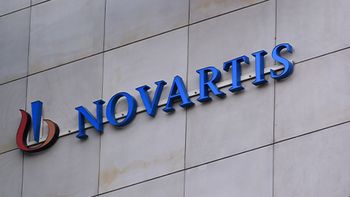
Is Faster FDA Review Enough to Justify Onshoring?
In the second part of his Pharma Commerce video interview, Brad Stewart, BDO’s national life sciences co leader, reveals how National Priority Vouchers—and geopolitical pressure—are reshaping decisions around supply chain investment.
In a recent discussion with Pharmaceutical Commerce, Brad Stewart, BDO’s national life sciences co-leader, dives into the role of the Commissioner’s National Priority Vouchers (CNPVs)—a program designed to incentivize pharmaceutical activities that support US national interests, including domestic manufacturing. The industry is still waiting to see how the FDA Commissioner’s office will determine which drugs or manufacturers qualify for these vouchers, as the decision-making framework has not yet been fully clarified. Although CNPVs are widely viewed as a valuable opportunity, the criteria for selection remain somewhat opaque.
One of the program’s stated goals is to bolster domestic drug production, particularly for products considered essential for national security or for strengthening the US healthcare supply chain. However, Stewart notes that most CNPVs issued to date have not been tied directly to manufacturing-related reasons. Only two vouchers so far have been awarded specifically for domestic production, each aimed at bringing large-volume, medically important drugs back to US manufacturing sites. These cases involved one antibiotic and one anesthetic—both categories of drugs that the US has historically struggled to maintain stable access to, especially during global disruptions.
Stewart highlights that the strongest candidates for future CNPVs may be high-volume products critical to the US healthcare system where the majority of supply is currently sourced internationally. He points to lessons learned during the COVID-19 pandemic, when the nation faced acute shortages of several foundational medicines. Drugs that demonstrated vulnerability in supply during that time—particularly those with heavy overseas reliance—could represent the most immediate opportunities for manufacturers seeking to qualify for an NPV.
Overall, while the pathway to securing a voucher is not yet firmly established, Stewart emphasizes that companies with essential, widely used drugs and a compelling case for onshoring production may be best positioned as the program’s direction becomes clearer.
He also shares whether he believes the shortened review times offers enough return on supply chain investment; the definition of manufacturing commitment; how to measure the long-term value of CNPV; and much more.
A transcript of his conversation with PC can be found below.
PC: Given the high cost of building or expanding US manufacturing capacity, do you think the shortened review time provides enough return on supply chain investment? Why or why not?
Stewart: Certainly, there’s definitely an incentive for people to think about their supply chains and how they can produce more of those products in the United States, whether they're the finished goods, it could be drug substance, drug product, or even people who are producing materials like single-use products we use in biomanufacturing. Part of that is, you're exactly right, Nico, the challenge of the timelines to onshore manufacturing, move it from one place to another are challenging.
But I think that if you look at what's changed over the last few years, two years ago, there was a big perceived risk, about doing manufacturing in China with the BIOSECURE act. A lot of times, companies, if they didn't change their manufacturing locations, they were deciding partnerships with CDMOs, those sorts of things they might have favored friendshoring, or near- shoring production in Europe or other places outside of China.
Now, that's even changed during this administration, where it's onshoring rather than those choices. I think the dynamic issues make that challenging, but certainly in the context of National Priority vouchers, that's one of the things they consider. We've seen a lot of those being issued for large-scale public health threats. There's one that was issued for vaping, tuberculosis was one. These applications are something the companies get to write themselves to create sort of that interest within the FDA.
I think there are companies that might have compelling drug candidates that can create a narrative which pulls all these together. Not only do I have something that's going to address a critical unmet need for healthy United States, I'm going to produce this in the United States for our patients. I think those are opportunities for people to stand out in the crowd.
Newsletter
Stay ahead in the life sciences industry with Pharmaceutical Commerce, the latest news, trends, and strategies in drug distribution, commercialization, and market access.




